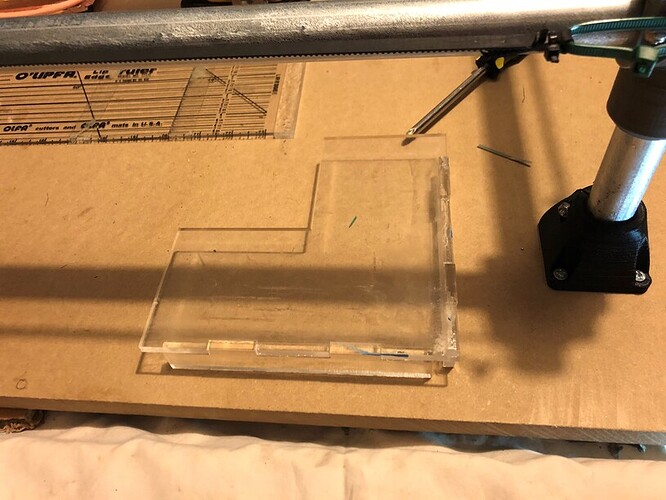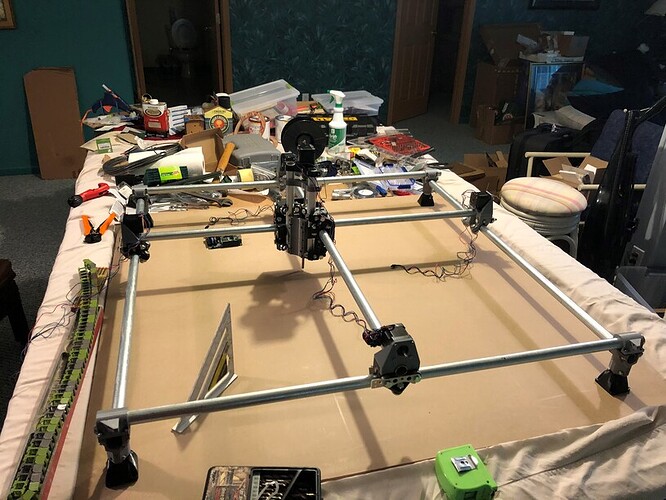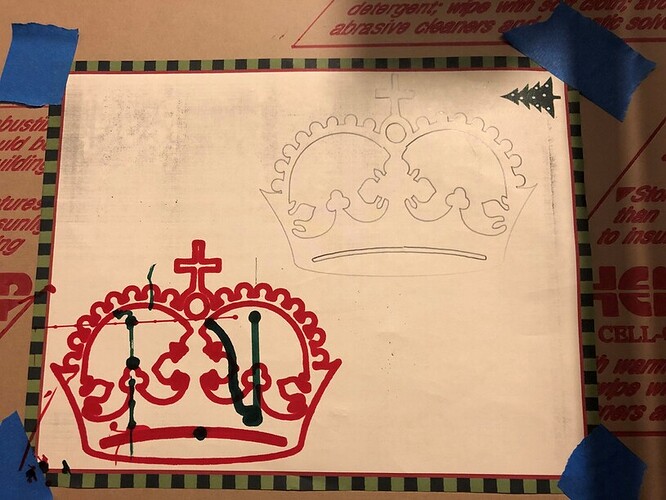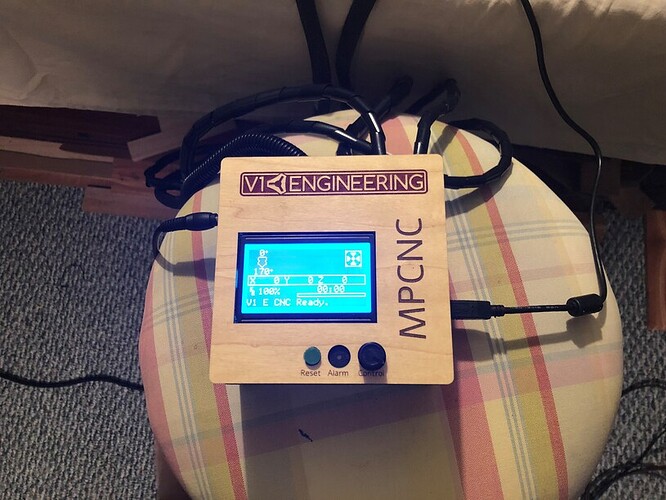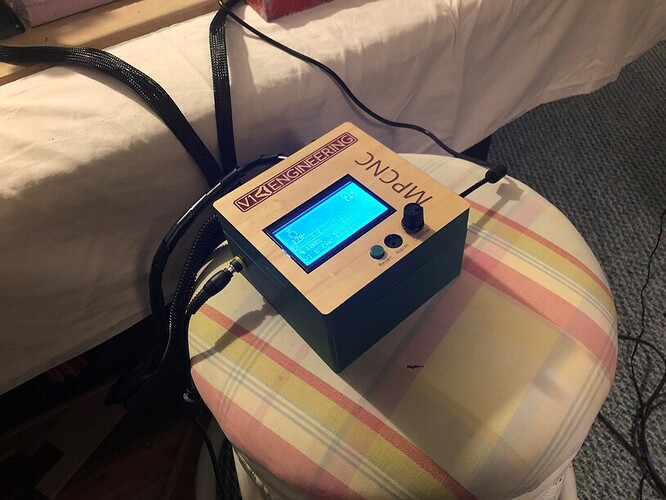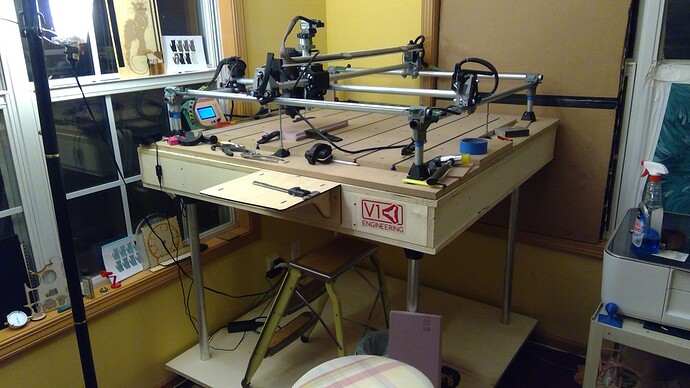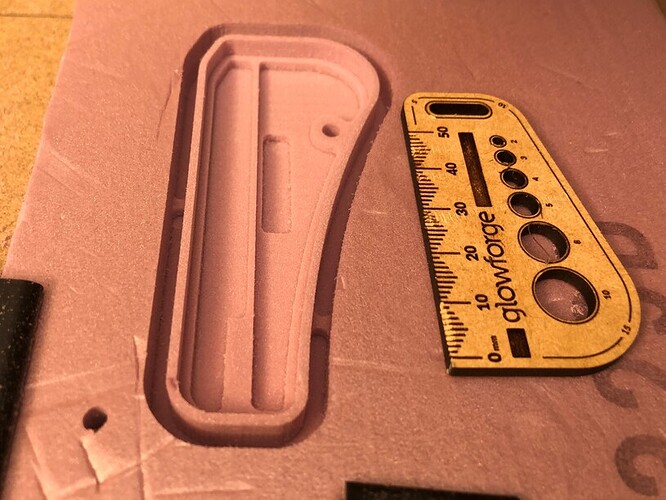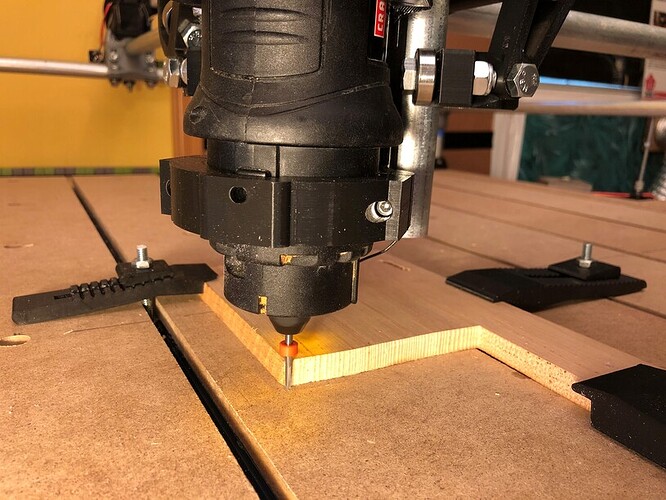One little jig is an excuse to post about my newest project. Made it out of thick acrylic so I could set the corner feet easily.
The jig really made a difference in getting it square. With dual end stops it is holding square well.
Pool table makes a great project table for assembly.
Accessible bed is about 800mm x 800mm. Should accommodate 2.5 inches of material. You can buy all the electronics and hardware from the V1engineering. I just bought the motors and control board.Wish I would have bought the wiring harness but figured I would make my own up. I had ordered a dupont connector crimper and kit but it never showed up. So it was a lot of soldered connections and shrink tube.
As much as I read up and wrote things down and tried to plan ahead with a spreadsheet and everything to source the parts, I still fell prey to confusion and printed out the 25mm parts which are common for European stainless pipes rather than standard 3/4" US conduit which is 23mm. Haven’t been the only one confused about the naming conventions used on Thingiverse. I had two downloaded directories and didn’t expand the column in explorer to reveal the whole name of the directory. Picked the wrong one and just kept printing from that directory during the two weeks it took to print it out. That was way back over Christmas and I was so deflated over it, that I had to put it on hold for a bit.
Got all the wiring neated up except for the very ends that are waiting for the control box. I’ll probably do a combo of 3D printed and Glowforge for the control box.
Was absolutely floored that no magic smoke appeared. Just so confused in figuring out the build instructions. There are so many options and parameters and versions that it took a long time to decipher everything. Everything was wired correctly but with the x and y swapped from where I wanted to put the zero point. So I swapped the stepper plugs and it’s off to the races.
Early shot of the build after squaring everything up and installing motors. With the first large 450mm x 450 mm square, it is off by 3mm in the Y but seems spot on at that distance for X. There is something going on with the Y. It travels smoothly without power, but under power, there is a little rumble, slight grind or rub somewhere. As much as I have been reading about these and trying to understand how the boards and steppers work, it still is pretty steep learning curve. It does make me appreciate that I can just drop an SVG in the Glowforge and away it goes.
Right now the process is Inkscape to Estlcam to repetierhost. Getting that workflow figured out is taking a bit of time.
This is the hello world file for the MPCNC. I had to go back and readjust the heights of the risers after jamming the sharpie tip into the work. A little too much stickout from the marker and the pen and it shows from the change of direction wonkiness in the design. Printing an improved pen holder with a spring right now.
I am also having issues with homing in the X. When I tell it to home, only one stepper moves. I have lots to figure out for troubleshooting. I thought I had everything configured correctly. The Y homing command moves both steppers. Strange.
I am a long way from cutting some chips though. I need to wire in an E-stop, get the case done, and then switch to a setup of Octoprint on an RPi for control. So many things to check off that I’m not sure where to start. Can’t fix one thing without figuring out the other. I need to make the table it’s going to go on and then rig up an enclosure and get dust collection figured out before then too.
All in all, it’s going well. I was working on either building or buying a CNC router a few years ago. Bought some steppers and some v-bearings, and a tinyG and used Chilipeppr to begin trying to figure out how these things work. Ihad been ready to buy an X-Carve in 2015 when Glowforge debuted and then I went in a different direction.
I am not quite sure what I am going to do with it. I have an idea of surfacing larger end grain cutting boards, but that is a pretty tall order. I have a Craftsman multi use rotary cutter that I got at a garage sale for $10 practically brand new. It will work ok for now. Spent a lot of time designing the custom tool holder for it.

